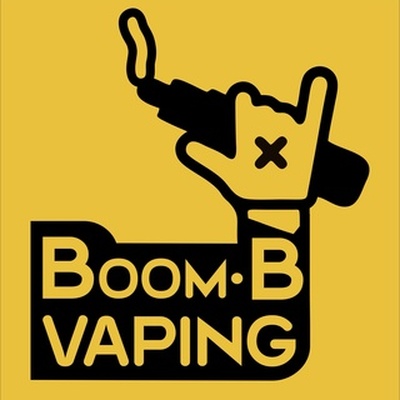Vaping History: The New Era and the Beginning of Vaping
Body
Vaping, as we know it today, has become a ubiquitous part of modern life, offering an alternative to traditional smoking. But where did it all begin? The history of vaping is a fascinating journey that combines innovation, changing social attitudes, and advancements in technology. This article explores the origins of vaping, its evolution into the new era, and how it has reshaped the landscape of nicotine consumption.
The Origins of Vaping
Early Concepts and Attempts
The concept of inhaling substances for therapeutic and recreational purposes is ancient, dating back thousands of years. However, the idea of using electronic devices to vaporize substances is relatively recent.
- Herbert A. Gilbert’s Invention (1963): The first recorded idea of an electronic cigarette was patented by Herbert A. Gilbert in 1963. Gilbert’s device was intended to replace traditional tobacco cigarettes with a smokeless, non-tobacco alternative. It used a battery-powered heating element to vaporize a flavored liquid. Despite the innovative concept, Gilbert’s invention never reached the market, largely due to the lack of interest and the dominance of traditional tobacco companies at the time.
The Rise of Modern Vaping
The modern era of vaping began with significant advancements in technology and a growing awareness of the health risks associated with smoking.
- Hon Lik’s Breakthrough (2003): The modern e-cigarette was invented by Hon Lik, a Chinese pharmacist and inventor, in 2003. Motivated by his father’s death from lung cancer and his own struggles with smoking, Hon Lik developed the first commercially successful electronic cigarette. His design used a piezoelectric ultrasound-emitting element to vaporize a pressurized jet of liquid containing nicotine diluted in a propylene glycol solution. This invention laid the foundation for the vaping industry.
The Evolution of Vaping
Early Adoption and Growth
After Hon Lik’s invention, e-cigarettes quickly gained popularity, first in China and then globally.
- Introduction to the Market: The first e-cigarette was introduced to the Chinese market in 2004 by the company Ruyan (meaning "like smoke"). By 2006, e-cigarettes were available in Europe, and in 2007, they entered the U.S. market.
- Early Devices: The initial models were relatively simple, consisting of a battery, a heating element, and a cartridge filled with nicotine solution. These early devices, known as "cigalikes," closely resembled traditional cigarettes in size and appearance.
Technological Advancements
As vaping gained traction, technological advancements led to the development of more sophisticated devices.
- Ego-style E-cigarettes (2007-2010): The introduction of the Ego-style e-cigarette marked a significant advancement. These devices featured larger batteries, allowing for longer usage times and greater vapor production. They also introduced the concept of refillable tanks, giving users more flexibility in their choice of e-liquids.
- Mods and Customization (2010-Present): The vaping community began to experiment with modifying (or "modding") their devices to enhance performance. This led to the creation of "mods," customizable devices with variable voltage and wattage settings. Mods allowed users to adjust the power output, control the temperature, and even customize the appearance of their devices.
E-liquids and Flavor Diversity
The development of e-liquids has been crucial to the vaping experience, offering a vast array of flavors and nicotine strengths.
- E-liquid Composition: E-liquids typically consist of a base (propylene glycol (PG) and vegetable glycerin (VG)), nicotine, and flavorings. The ratio of PG to VG affects the vapor production and throat hit, allowing users to tailor their experience.
- Flavor Innovation: Initially, e-liquids were available in limited flavors, primarily mimicking traditional tobacco and menthol. However, the market quickly expanded to include a wide variety of flavors, ranging from fruits and desserts to beverages and unique blends.
The New Era of Vaping
Regulatory Challenges and Health Concerns
As vaping grew in popularity, it attracted the attention of regulatory bodies and health organizations worldwide.
- Regulations: Different countries have approached vaping regulations in various ways. Some have embraced it as a harm reduction tool, while others have imposed strict regulations or outright bans. The U.S. Food and Drug Administration (FDA) began regulating e-cigarettes in 2016, requiring manufacturers to submit products for approval and enforcing age restrictions.
- Health Studies: The health impacts of vaping have been a topic of extensive research. While vaping is generally considered less harmful than smoking traditional cigarettes, concerns remain about the long-term effects, particularly on lung health and nicotine addiction. Studies have shown that while e-cigarettes contain fewer toxicants than combustible cigarettes, they are not risk-free.
Market Growth and Demographic Shifts
The vaping market has seen exponential growth and diversification in its user base.
- Market Expansion: The global vaping market has grown significantly, with new products and brands continually emerging. The market includes not only e-cigarettes but also vape pens, pod systems, and advanced mods.
- Demographic Changes: Initially popular among smokers looking to quit or reduce their cigarette consumption, vaping has also gained popularity among younger demographics, including non-smokers. This shift has raised concerns about the potential for nicotine addiction among youth and the appeal of flavored e-liquids.
The Role of Vaping in Smoking Cessation
Vaping has been promoted as a tool for smoking cessation, offering smokers a less harmful alternative.
- Quit Rates: Several studies have indicated that vaping can be an effective smoking cessation aid. The ability to gradually reduce nicotine levels and mimic the sensory aspects of smoking makes it an attractive option for smokers looking to quit.
- Public Health Campaigns: Public health organizations in some countries have incorporated vaping into their smoking cessation campaigns, providing guidance and support for smokers transitioning to vaping.
Future Trends and Innovations
Technological Advancements
The vaping industry continues to innovate, with advancements in technology enhancing the user experience.
- Pod Systems: Pod systems have gained popularity due to their convenience and ease of use. These compact devices use pre-filled or refillable pods and offer a more streamlined vaping experience.
- Temperature Control and Safety Features: Modern devices incorporate temperature control and safety features, reducing the risk of dry hits and battery-related incidents. These advancements improve the reliability and safety of vaping devices.
Emerging Markets and Global Impact
As vaping becomes more widespread, its impact is felt globally.
- Emerging Markets: Vaping is expanding into emerging markets, where smoking rates remain high. These regions represent significant opportunities for growth and harm reduction.
- Global Public Health: The global public health community continues to debate the role of vaping in reducing smoking-related harm. As more evidence emerges, policies and recommendations are likely to evolve.
Cultural Acceptance and Social Norms
The cultural acceptance of vaping varies widely, influenced by local regulations, media portrayal, and public perception.
- Normalization: In some regions, vaping has become normalized and integrated into social settings. Vape shops, lounges, and online communities have contributed to the growth of vaping culture.
- Stigmatization: Conversely, in areas with strict regulations and negative media coverage, vaping can be stigmatized. Public education and awareness campaigns play a crucial role in shaping perceptions and understanding.
Conclusion
The history of vaping is a testament to human ingenuity and the quest for safer alternatives to traditional smoking. From early concepts to modern innovations, vaping has undergone significant transformations, adapting to technological advancements and changing societal needs. As the vaping landscape continues to evolve, it remains a pivotal topic in public health, regulation, and consumer choice. Understanding its history and impact is essential for navigating its future, ensuring that it remains a viable option for those seeking a less harmful way to enjoy nicotine.







Comments